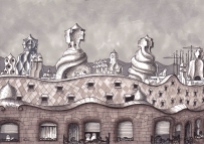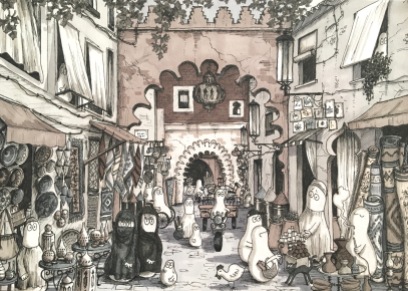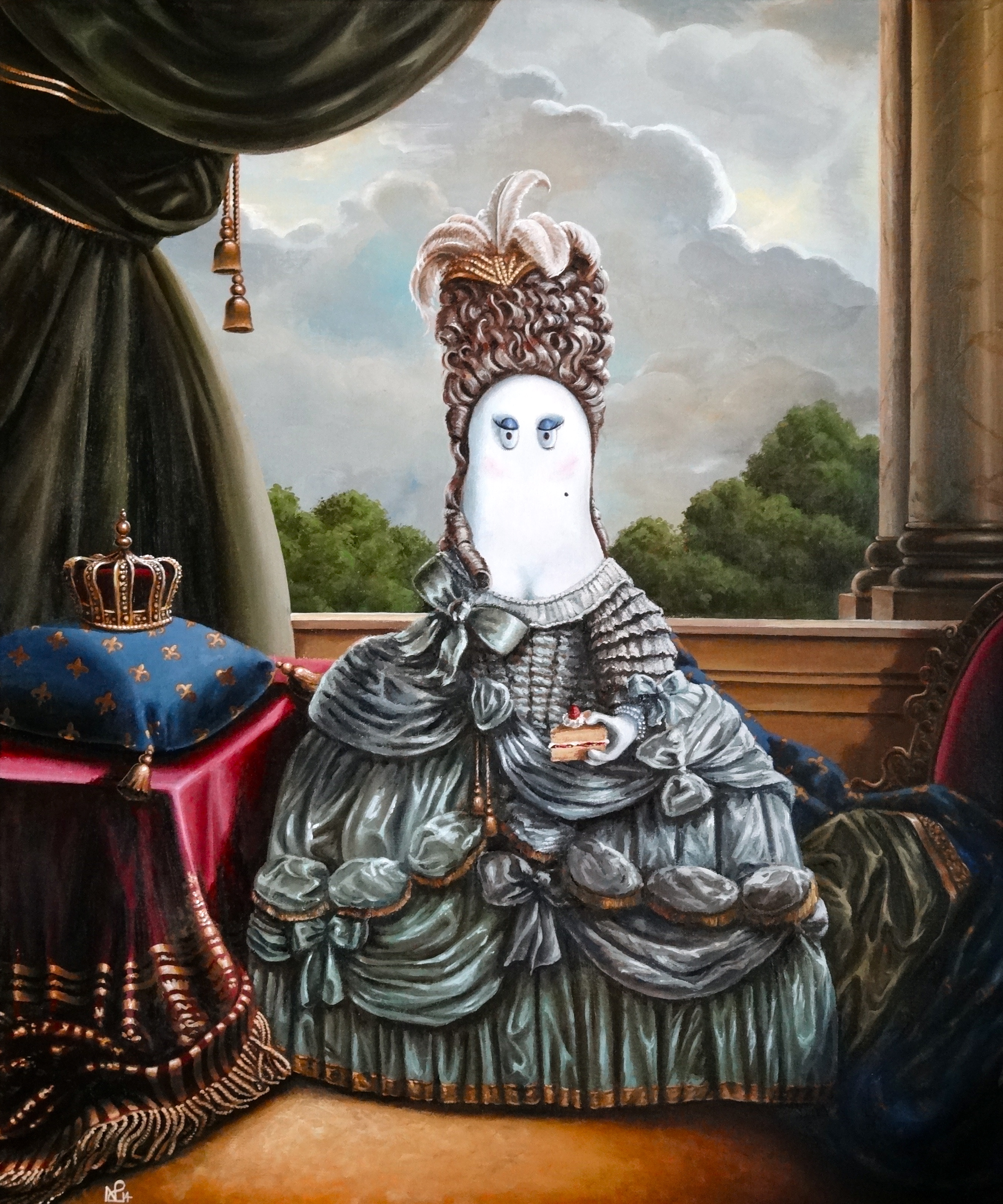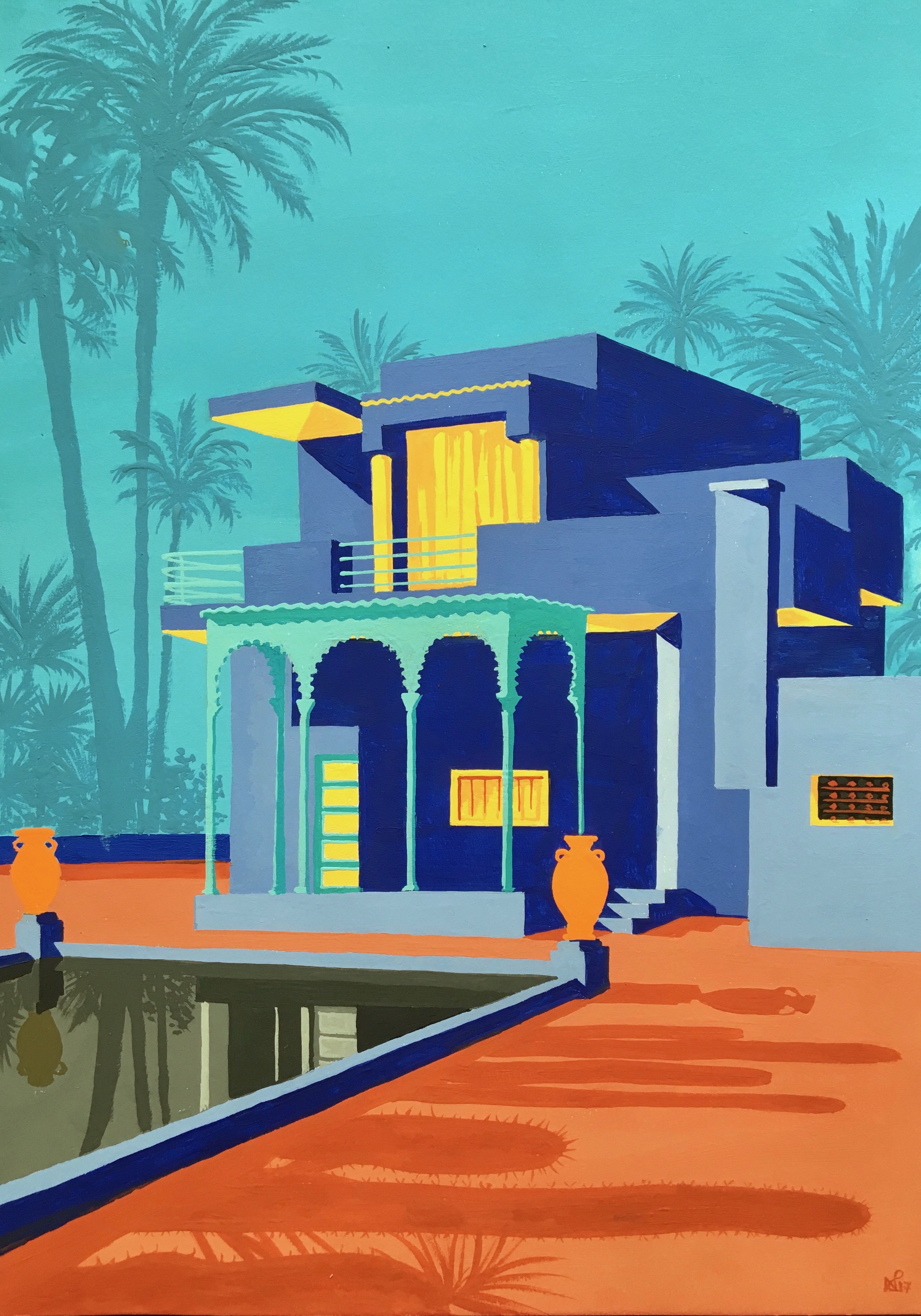Sunday Supplement: Dicing with Death (La Pieta)

On last week’s Sunday Supplement, I got the ball rolling with an exploration of some of my more traumatic paintings, created while in the immediate and protracted recovery from my nasty life-changing collision with a collapsing wall. In today’s Sunday Supplement, I am featuring the fourth of my accident paintings, and perhaps the most intimate and private of them all.
Dicing with Death (La Pieta de l’accident) explores the nursing roll undertaken by my mother is the aftermath of my accident. While as a family, we had always been close, post-accident, a new extent of proximity was forced upon us, as I went back to being practically a baby in the everyday attention I required. Recovery in hospital was one thing, but three weeks later when I was discharged to my family home in Sussex, the real horrors of my convalescence begun. The daily trauma of wearing an illazarov frame, having to clean around the pin entry point, waking up to sheets soaked in blood, screams of agony when I tried to move from bed to the bathroom, and in the middle of the night when I could stand the pain no longer. All of this was for my parents to bear, and for my mother in particular, who was compelled to be a nurse as well as a physio, feeder and grieving mother, and once again become physically intimate with me when I needed help dressing, cleaning, even going to the toilet, it was a huge ordeal to experience.

Dicing with Death (La Pieta de l’accident) 2008 © Nicholas de Lacy-Brown, oil on canvas 120cm x 120cm
The worry, the concern and the strain this had on both of my parents was plain to see, even through the fog of pain which clouded my eyes during those terrible months. My attempt at expressing the uncontrollable spread of the effects of my accident upon my family was to paint this work. It is loosely based on the famous La Pieta sculpture by Michelangelo, which poingantly portrays the grieving Mary cradling, with disbelief and agony, the limp dead body of her son. How different this pose is from the celebratory felicity of the typical mother and child pose, the glowing Mary with her new baby Jesus.
It was tapping into the great pathos portrayed by La Pieta that I chose to reflect the pose in my Mother, cradling me, the wounded young adult in her arms, not dead, but so close to it as I practically embraced my end under the weight of a crushing collapsed 10ft concrete wall. There too is my baby nephew, born only a few days before the accident, representing both innocence and the cross-generational effect of my trauma, and also in the scene, a skull, reminding me of how close to death I came. The playing cards, the falling dominoes and the dice all go to represent the great gamble we take every day of our life – when everything appears normal until one, life-changing event occurs and alters everything for ever: Look then how the dominoes will fall and the effects of the event begin to traverse every facet of your existence.
Michelangelo’s La Piete is not unique of course, and I leave you with two other variations on the theme – Bellini’s painting, and Picasso’s heart-wrenching study for his great masterpiece of grief and tragedy, Guernica.
© Nicholas de Lacy-Brown and The Daily Norm, 2001-2012. Unauthorized use and/or duplication of the material, whether written work, photography or artwork, included within The Daily Norm without express and written permission from The Daily Norm’s author and/or owner is strictly prohibited. Excerpts and links may be used, provided that full and clear credit is given to Nicholas de Lacy-Brown and The Daily Norm with appropriate and specific direction to the original content.
Related articles
- Sunday Supplement: Bricks and Stones May Break My Bones (normsonline.wordpress.com)












































This painting is really hard to look at, at first. But your explication of the elements, the analysis, makes it much easier to bear! It seems to have elements of Frida Kahlo (the brace, the pain) as well as the pieta. And Guernica! There are small towns in Europe that have its image, or parts of it, as part of their WWII memorials — it certainly screams ‘pain’, ‘destruction’, & the ‘challenge of recovery’ doesn’t it??
Hey thank you for your insightful comments – Frida Kahlo definitely came to mind when I was painting post accident!
Oh, you’re welcome:) At first sight, I couldn’t bear to look at that painting — ugly in its painfulness! So, I made myself look again, & read your analysis. And it became a beautiful testament.
I am breathless and speechless with your work of art. The picture that signifies your accident and your mom with the emotions of what moms feel when their children are hurt is brilliant.
I was raised helping with my Uncle Ronnie that was paralyzed from the neck down at 17 years old. I would sit with him and watch him paint. He painted with the brush in his mouth, while me or someone else held up the colours for him to paint with. Inspiring and you are definitely inspiring as well!
One question, your mom’s pendant in the drawing. Is there something significant about it?
This is so amazingly kind of you to say, and I feel almost embarrassed by my minor plight compared to the great bravery obviously shown by your Uncle in continuing to paint despite his paralysis. What an inspiring story – thank you so much. My mother was wearing that pendant on the day of the accident, but ironically, I felt it symbolised her tears in its shape, and also colour, like the muddy dark blue of tears stained by makeup.
Thank you so much for your kind words. I loved how your mom was portrayed within your art; very lovely and strong; yet heartbroken in worry for her son. Beautiful!